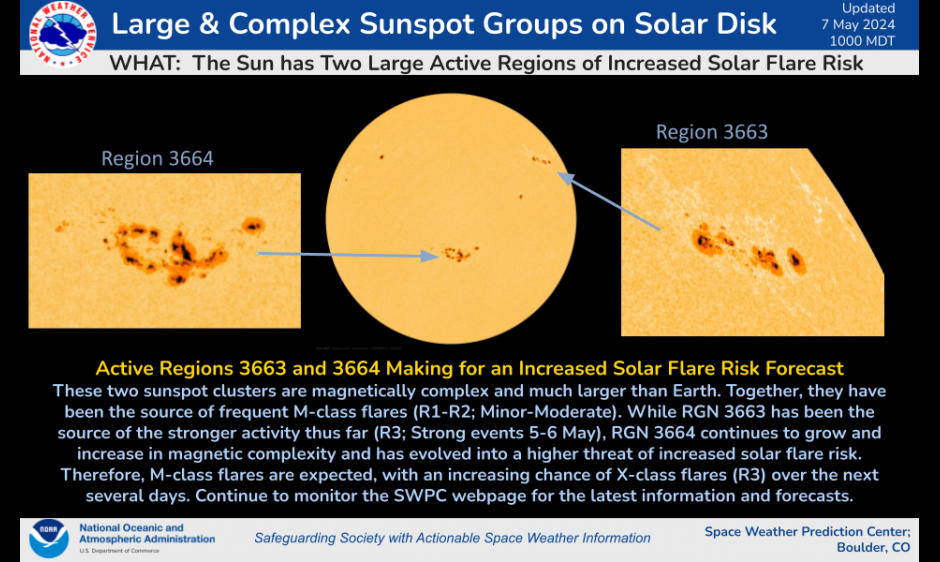
Large and Complex Sunspot Groups Lead to Increased Solar Flare Chances
Sunspot Region 3663's history of activity and the continued growth and complexity of Region 3664, are leading to increased solar flare risk. Region 3663 has been the source of most solar flare activity, including the flury of R3 (Strong) events 5-6 May, however, Region 3664 has grown considerably and has become much more magnetically complex. This has led to increased solar flare probabilities over the next several days. Continue to follow our web page for the latest information and forecasts.